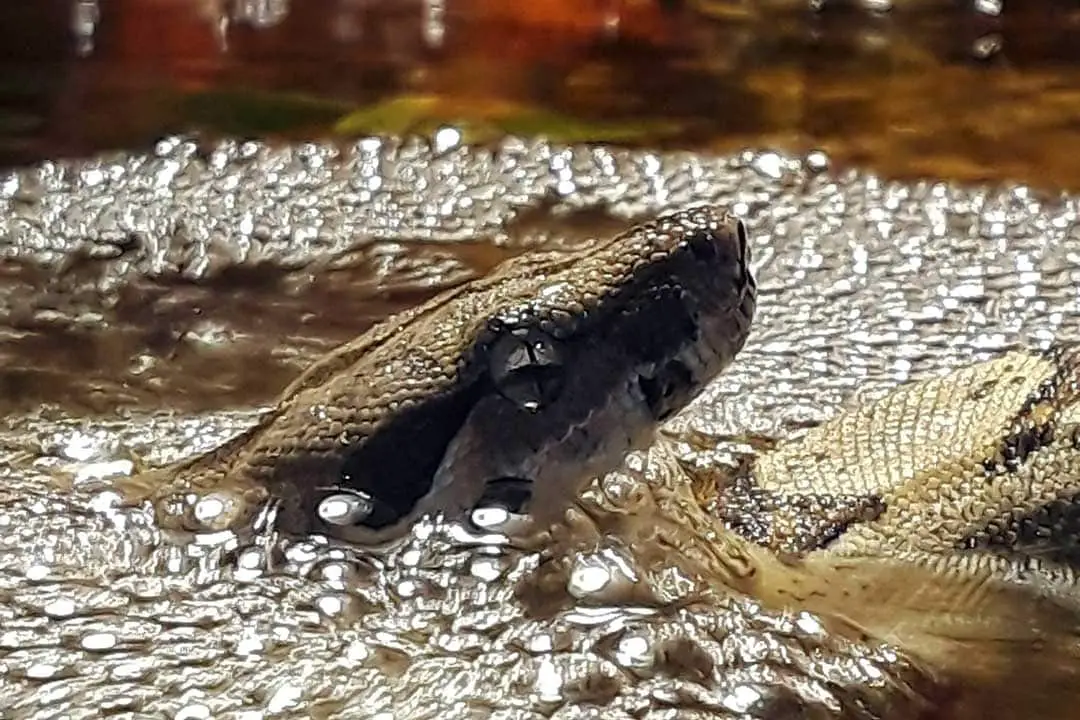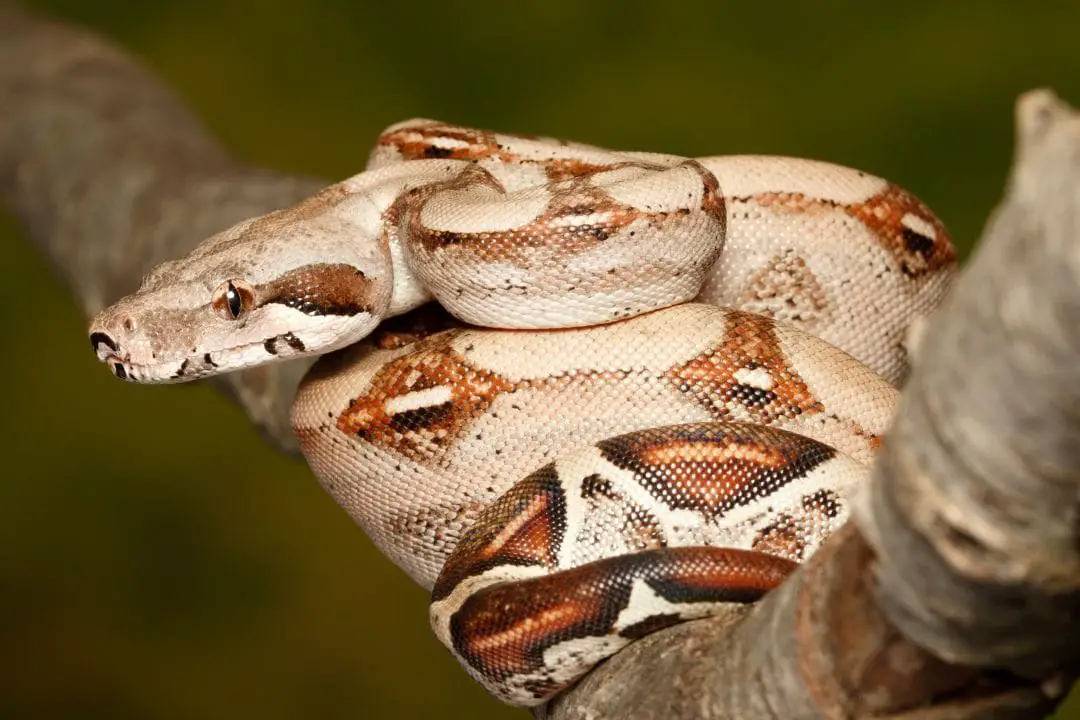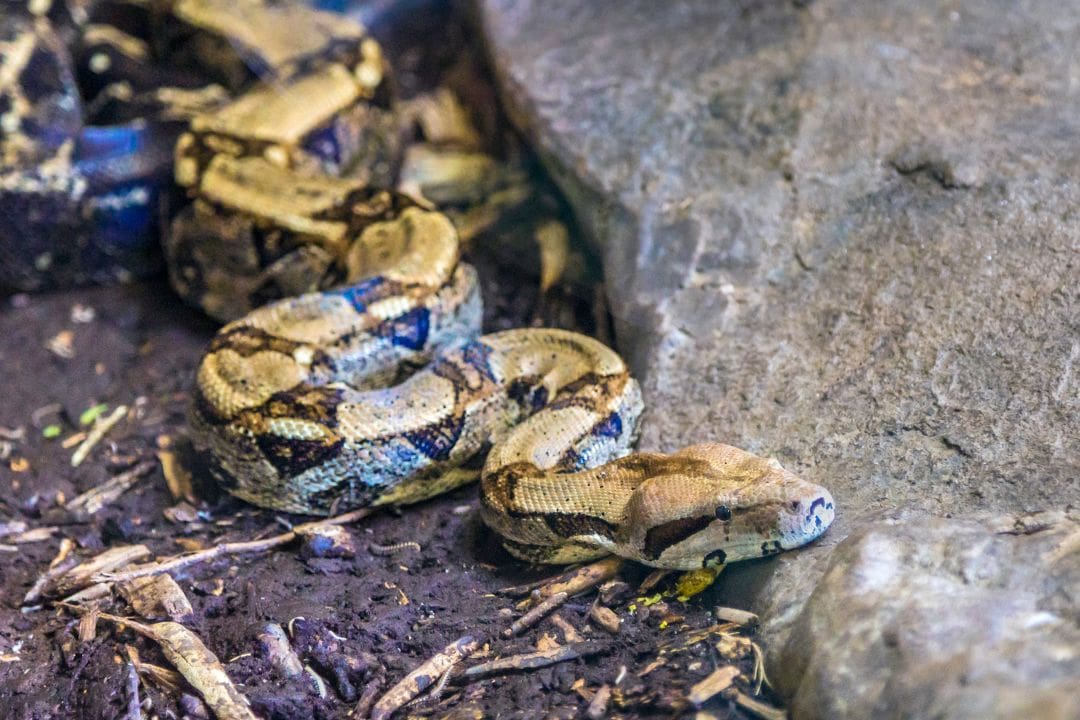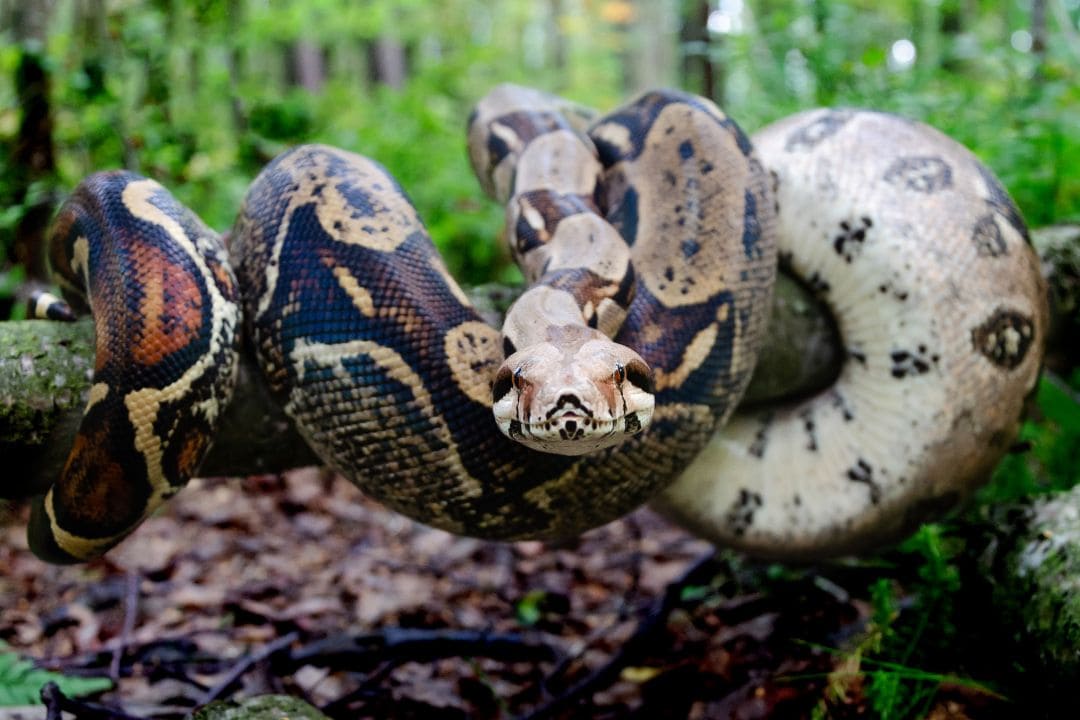Boa constrictors (Boa constrictor) are non-venomous constricting snakes native to Central and South America. They live in a wide variety of habitats from deserts to forests.
Many related snakes such as the green anaconda are very good swimmers. Many anacondas are rarely found far from water.
You may wonder:
Can boa constrictors swim?
Boa constrictors can swim, and are strong swimmers. However, they prefer to stay on dry land whenever possible. They only swim if they feel it is necessary.
In the Wild
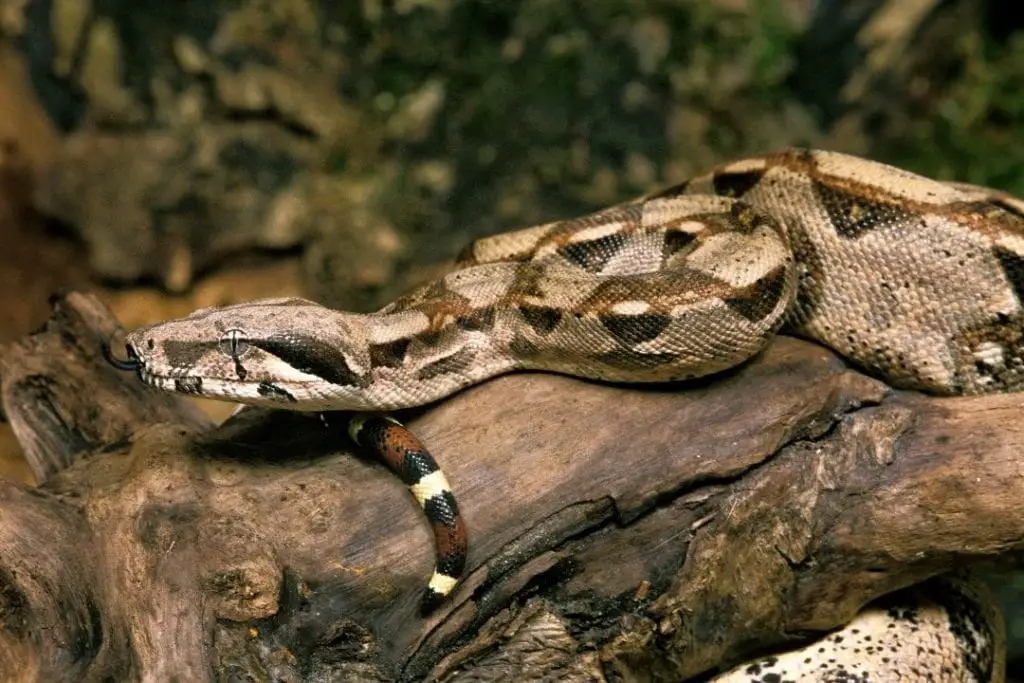
Boa constrictors can be found near bodies of water, but their range can cover very dry habitats as well. Some wild animals may never need to use their ability to swim. However, some animals live in areas that can experience flooding depending on the rainfall.
Most snakes are capable of swimming if they need to cross a body of water or escape from flooding. Boa constrictors are strong swimmers.
They have been seen crossing rivers to reach better hunting or breeding grounds. Most animals prefer to stay on dry land even in areas with plenty of water. These snakes are habitat generalists over much of their range. They can be found at multiple elevations and can be found in many habitats that can support a population of snakes that can reach 13 feet.
Some subspecies live almost entirely in dry forests.
The Occidentalis subspecies is found primarily in the Gran Chaco region. These snakes live almost entirely in dry forests with few bodies of water they need to cross.
The boas tend to rely on areas with open areas with plenty of sun and shaded areas under plants for thermoregulation. This is very important for their reproduction since these snakes are ovoviviparous.
Their young incubates inside the mother.
Generally, they will take to the water if they must. Otherwise, they typically den in hollow logs or abandoned animal burrows. They do not need very high humidity to stay healthy.
Snakes that are getting too dry typically have the option of seeking out a humid brow to hide in. They do not typically choose to hydrate in bodies of water when they are too dry.
There have been sightings of snakes swimming in their native habitat, but they are typically found in burrows, logs, or even up in the trees.
They do need to drink water, but many snakes can meet their hydration needs by consuming prey. Even animals that haven’t caught a meal lately may not need standing water.
Many snakes will drink rain or condensation off their scales if they are thirsty. This can help in regions where the snakes can’t find many sources of water.
They also rarely eat aquatic prey. The majority of a boa constrictor’s diet is made up of terrestrial or arboreal prey animals. Boa constrictors typically eat animals such as rats, squirrels, lizards, and other small animals. They will also eat birds if they can catch them.
While waiting near water to ambush prey can be a good strategy to find some prey, they are perfectly capable of finding prey away from it.
Boa constrictors have a very good sense of smell that can help locate paths that prey uses often
. Bodies of water can also host potential predators or competition for prey. For a large snake, staying away from competition for prey such as anacondas can be a good practice.
These snakes will also actively hunt for prey if they have had poor luck with ambush tactics.
In Captivity
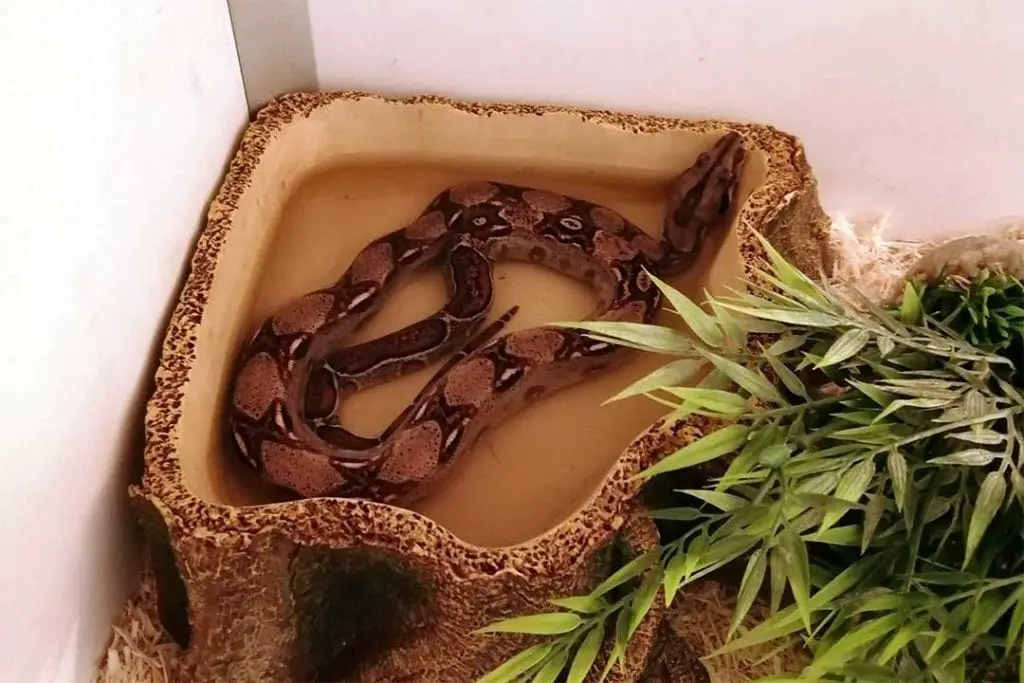
Since these snakes do not often swim in the wild, you may be wondering if it is all right to have them swim in captivity. It can be a struggle to keep up humidity and many snakes can benefit from a bath or a swim.
You may notice a captive boa constrictor in its water dish if it is too dry or if it has mites. Many shedding snakes will also spend time in their water dish if they do not have a damp hide available.
This can be a sign that your humidity is too low. While soaking can help most of the body, your snake may still struggle to shed the eye caps if it is not keeping its head in the water as well.
Offering the snake a chance to swim can be good enrichment. Swimming is a great exercise for snakes, but you will want to make sure the snake is free to leave if it doesn’t want to swim.
Using something like a kiddie pool with a branch the snake can use to climb out is a good idea. You will also want to make sure the water is between 75 and 80 degrees so your snake doesn’t get too cold during a swim.
You can also allow the snake to swim or soak when you are cleaning the enclosure. Try to keep these brief and make sure the water doesn’t get too cold. Use your temperature gun to verify the temperature of the water before you put your snake in.
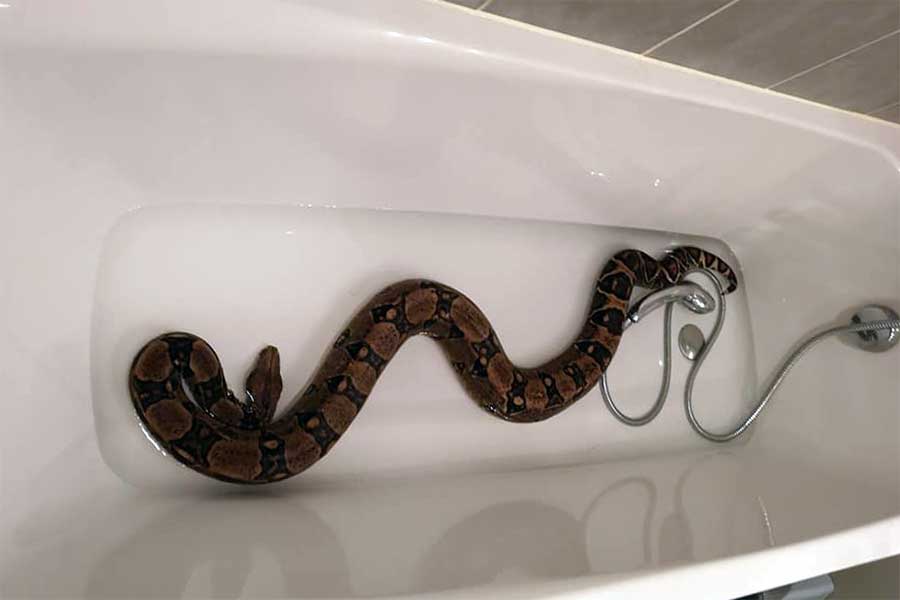
Your snake may or may not like swimming. Every boa is an individual with its own personality and preferences. Some snakes enjoy the occasional swim, while others will do their best to get out of the water immediately.
Watch your snake during any swimming time you offer. If it wants to leave, do not force it to stay.
Dry your snake off and offer a different enrichment or just let it go back in the enclosure to warm up. The only time you should make a snake stay in water is if your vet recommended it.
Even for problems like stuck shed, a snake that hates water can benefit from sitting on warm, damp paper towels. A storage tub with a lid and added holes can be closed to help trap in humidity if you really need to remove the stuck shed.
We hope this helped answer your questions about boa constrictors and their swimming ability. They are strong swimmers, but most animals do not spend a great deal of time in the water.
If you are looking into getting a boa constrictor, make sure to check out my complete guide to boa constrictor enclosure setup and care here.
If you have any questions or comments, we would love to hear from you. Leave a comment below.
